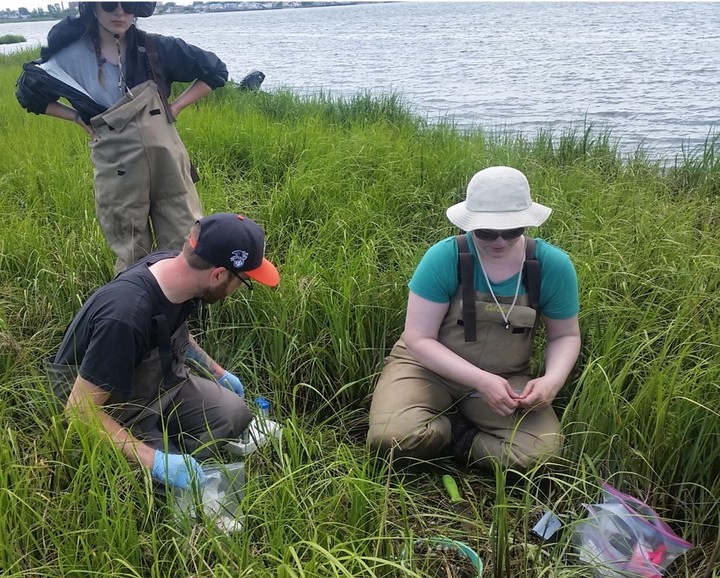
Abstract
Salt marshes play an important role in the global nutrient cycle. The sediments in these systems harbor diverse and complex bacterial communities possessing metabolic capacities that provide ecosystem services such as nutrient cycling and removal. On the East Coast of the USA, salt marshes have been experiencing degradation due to anthropogenic stressors. Salt marsh islands within Jamaica Bay, New York City (USA), are surrounded by a large highly urbanized watershed and have declined in area. Restoration efforts have been enacted to reduce further loss, but little is known about how microbial communities develop following restoration activities, or how processes such as nitrogen cycling are impacted. Sediment samples were collected at two sampling depths from five salt marsh islands to characterize the bacterial communities found in marsh sediment including a post-restoration chronosequence of 3–12 years. We used 16s rRNA amplicon sequencing to define alpha and beta diversity, taxonomic composition, and predicted metabolic profile of each sediment sample. We found significant differences in alpha diversity between sampling depths, and significant differences in beta diversity, taxonomic composition, and predicted metabolic capacity among the five sampling locations. The youngest restored site and the degraded natural sampling site exhibited the most distinct communities among the five sites. Our findings suggest that while the salt marsh islands are located in close proximity to each other, they harbor distinct bacterial communities that can be correlated with post-restoration age, marsh health, and other environmental factors such as availability of organic carbon.